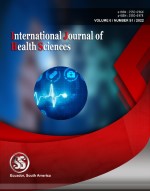Dual coding theory and its application in healthcare facility
Keywords:
radiation safety, dual coding theory, visuals, healthcareAbstract
The gap between verbal and non-verbal learning has always been a task for trainers and finding new ways for the same. Dual Coding Theory as a theory has been quite popular for past several years but still has not yet made its place in the daily education concepts. This paper focuses on application of the concept of Dual Coding Theory in which visuals were integrated into the content delivery and pre & post session evaluation using questionnaire having visuals to bring down the cognitive load on the mind of learners when being introduced to a new concept. Learners were healthcare workers and administrative staff who belonged to diversified departments. Content delivery was on Radiation Safety in Healthcare Facility to which they could be directly or indirectly encountering during their course of working. Attendees were appreciative of the visual dynamic components (Hand Drawn Images on Digital/Physical White Boards) for ease of understanding, interactive delivery and real time evaluation tools.
Downloads
References
Paivio A. Mental imagery in associative learning and memory. Psycho- logical Rev. 1969;76(3):241-263 DOI: https://doi.org/10.1037/h0027272
Paivio A. Mental Representations: A Dual Coding Approach. New York, NY: Oxford University Press, USA; 1990. DOI: https://doi.org/10.1093/acprof:oso/9780195066661.001.0001
Paivio A. Intrapair imagery effects in verbal discrimination and inci- dental associative learning. Can J Psychology. 1971;25:302-312. DOI: https://doi.org/10.1037/h0082392
Knowles M, Elwood F, Holton EF, Swanson RA. The Adult Learner. 5th ed. Houston, TX: Gulf Publishing; 1998.
Brookfield SD. Understanding and Facilitating Adult Learning. San Fran- cisco, CA: Jossey Bass Press; 1986.
Shapiro G. New York University workshops address storytelling in law and medicine. The New York Sun. http://www.nysun.com/article/ 7163. Accessed January 4, 2022.
Published
How to Cite
Issue
Section
Copyright (c) 2022 International journal of health sciences

This work is licensed under a Creative Commons Attribution-NonCommercial-NoDerivatives 4.0 International License.
Articles published in the International Journal of Health Sciences (IJHS) are available under Creative Commons Attribution Non-Commercial No Derivatives Licence (CC BY-NC-ND 4.0). Authors retain copyright in their work and grant IJHS right of first publication under CC BY-NC-ND 4.0. Users have the right to read, download, copy, distribute, print, search, or link to the full texts of articles in this journal, and to use them for any other lawful purpose.
Articles published in IJHS can be copied, communicated and shared in their published form for non-commercial purposes provided full attribution is given to the author and the journal. Authors are able to enter into separate, additional contractual arrangements for the non-exclusive distribution of the journal's published version of the work (e.g., post it to an institutional repository or publish it in a book), with an acknowledgment of its initial publication in this journal.
This copyright notice applies to articles published in IJHS volumes 4 onwards. Please read about the copyright notices for previous volumes under Journal History.
















